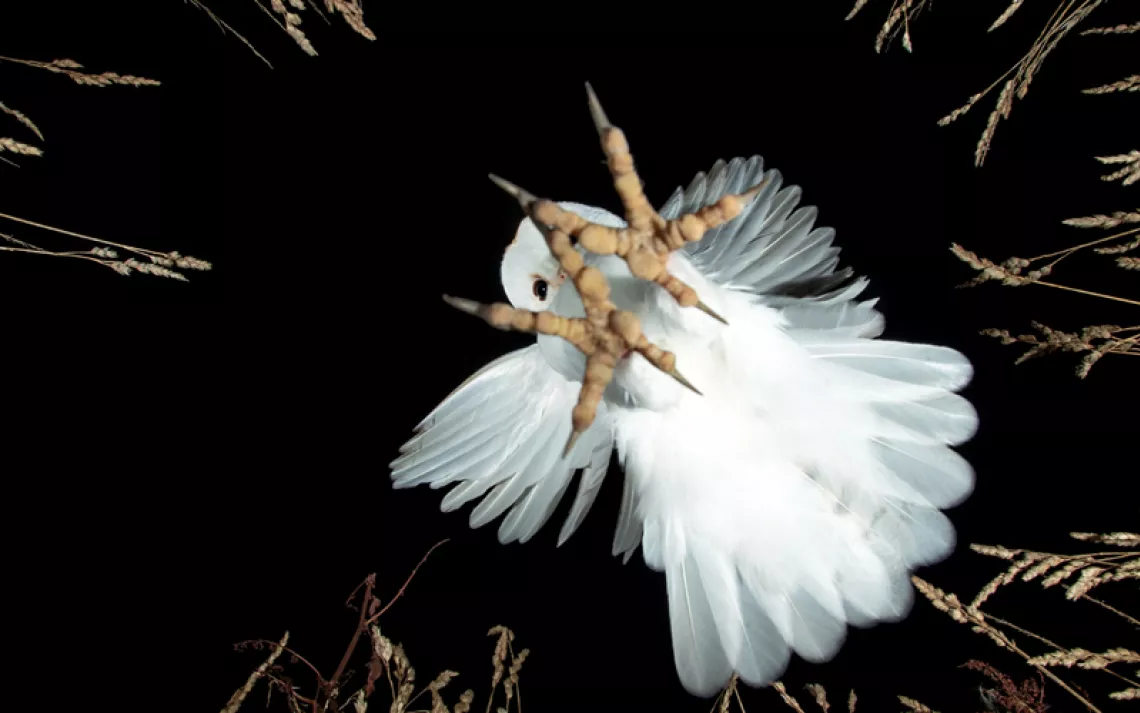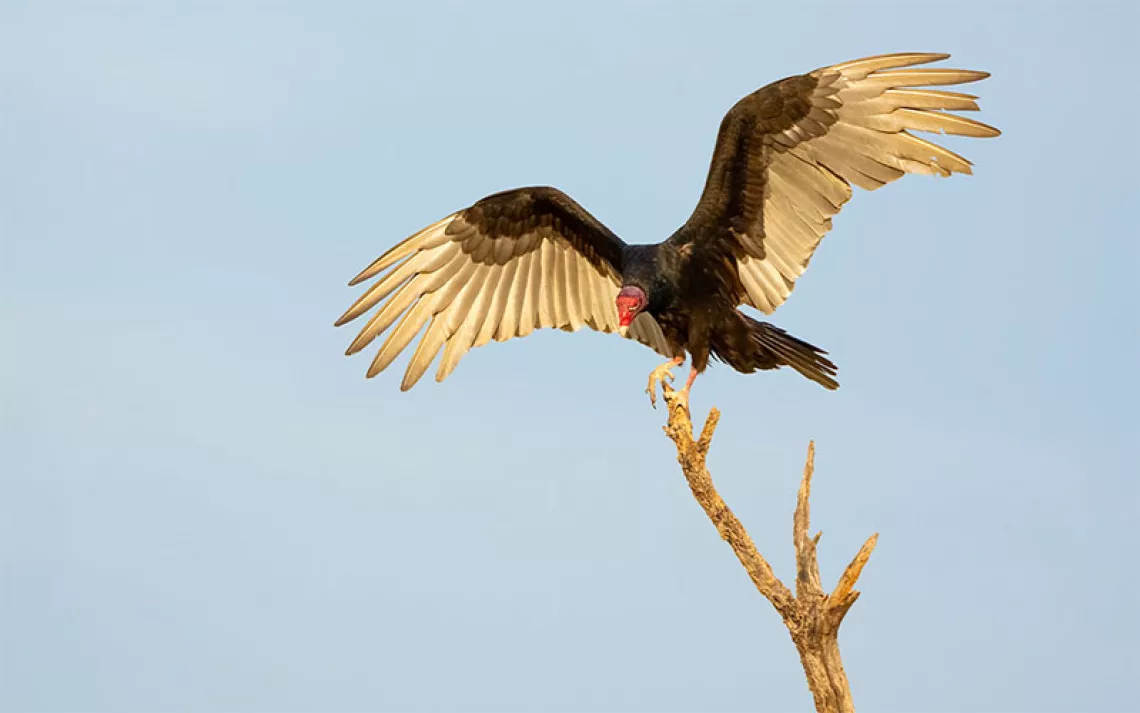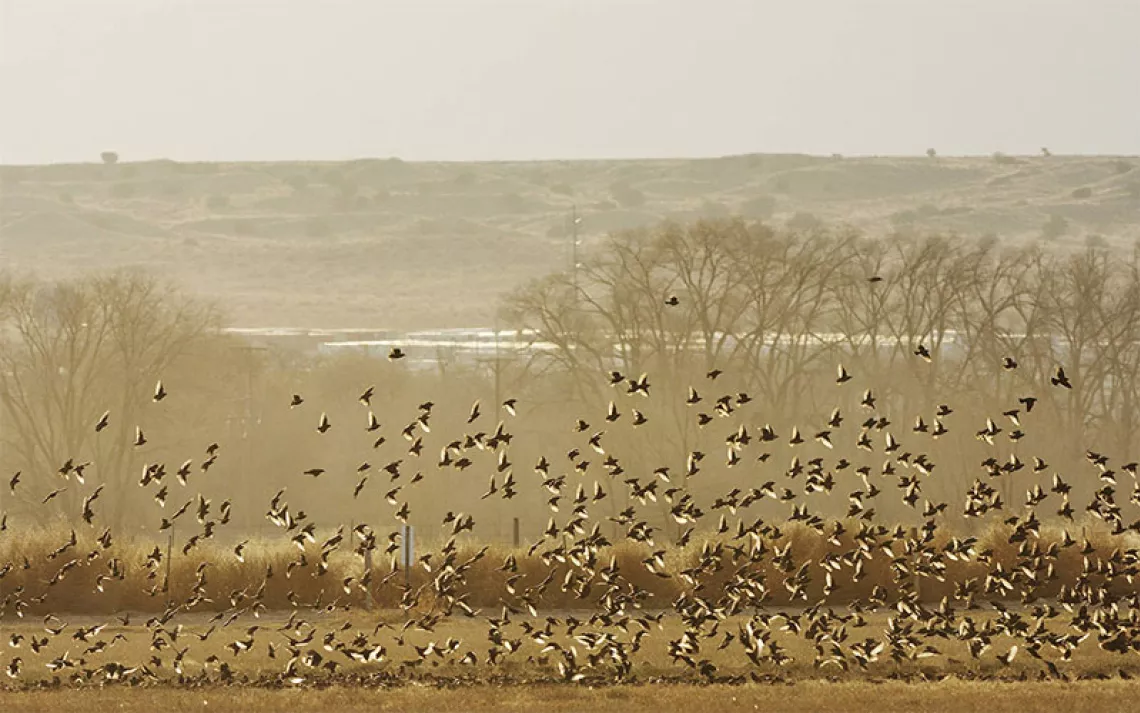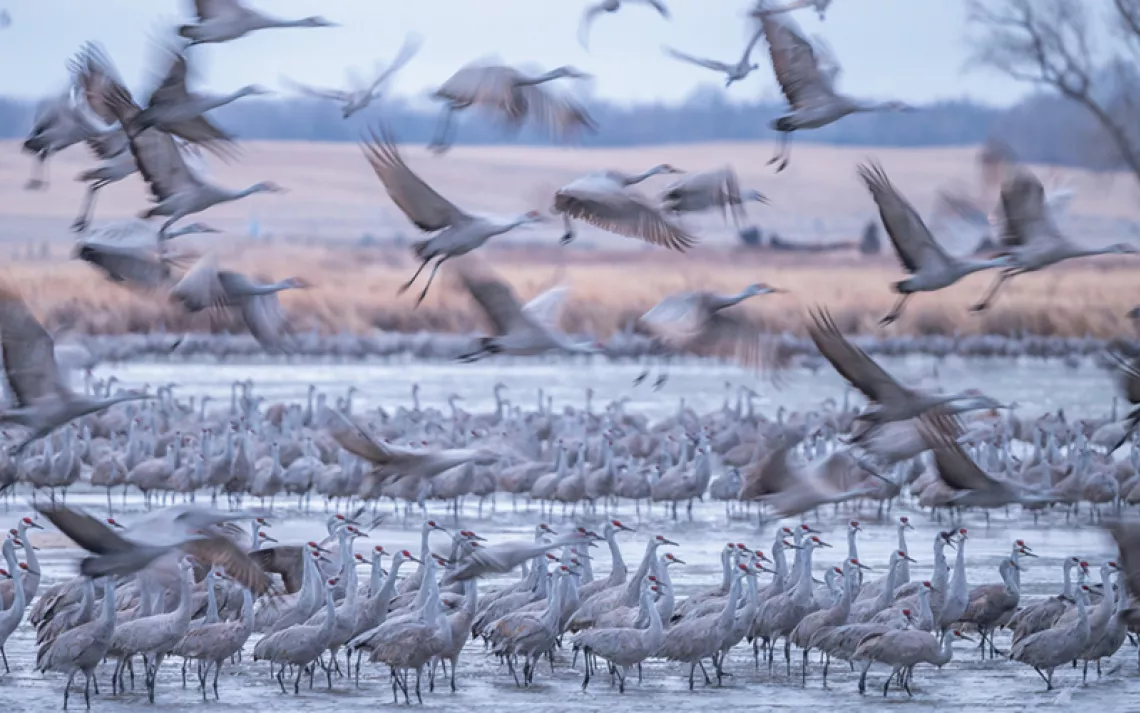The Rosy-Finch Moves in Mysterious Ways
Why black and brown-capped rosy-finches are among the most threatened birds in North America
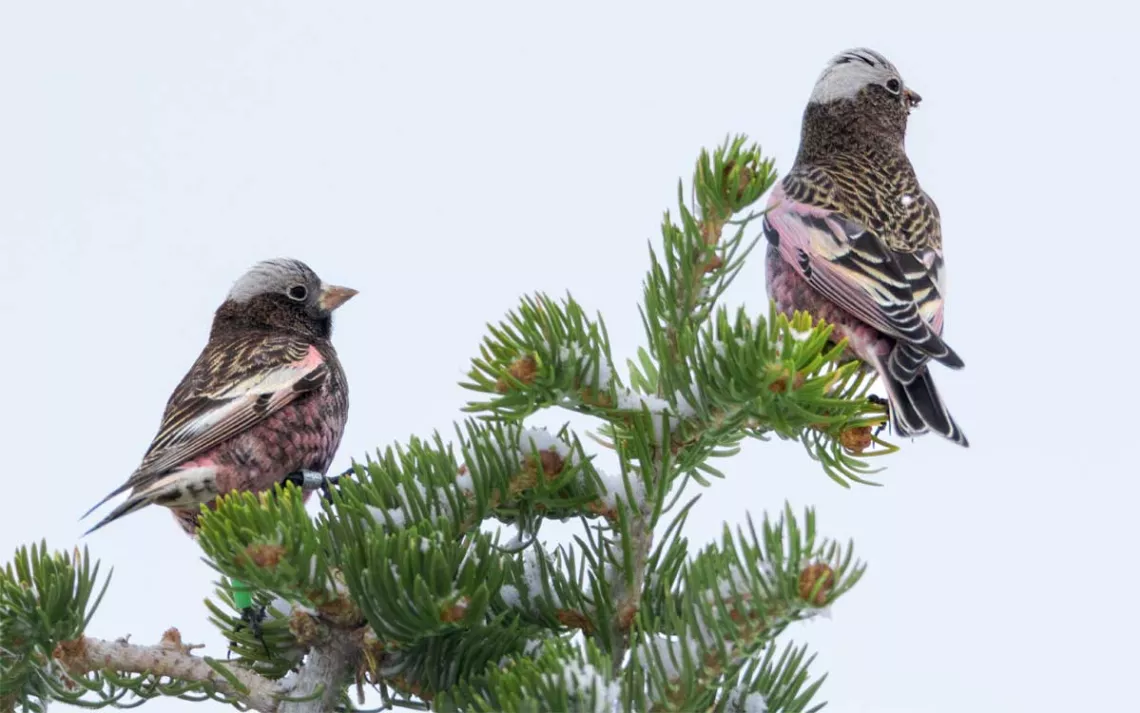
Rosy-finches. | Photo by Christina M. Selby
On a sunny winter morning at the two-mile-high crest of the Sandia Mountains in New Mexico, a dozen volunteer scientists, birders, and photographers milled around impatiently in the snow. They were there to capture and band elusive endangered birds.
"You got a bunch of rosies above you!" Rio Grande Bird Research lead biologist Steve Cox suddenly yelled to the group peering overhead.
A young birder couple, Jessica Jia and David Ortega, watched with excitement as a flock of striking black, gray, and rose-red finches cruised into a tall fir tree. They waited for the birds to descend to feeders ringed by mist nets—fine mesh scientists use to safely capture birds. "There's a rosy in the net!" Jia exclaimed. "Two rosies in the net!" Ortega echoed. The scientists quickly climbed an icy slope to the feeders and disentangled the finches so that they could be examined and banded before being released.
"I've had rosy-finches at my bird feeder for decades, and I don't have any rosy-finches this year."
Everyone here was drawn to rosy-finches because of their beauty and rarity—and their mysterious ways. Black rosy-finches breed in inaccessible cliff crevices on the highest peaks of western North America. Only a handful of researchers have ever observed their nests. The gray-crowned and brown-capped rosy-finch species are also hardy alpine specialists. These little-studied birds are rarely seen, except during the winter months, when they descend to high deserts and lower-elevation mountains from snowfields and glaciers.
Black and brown-capped rosy-finches are among the most threatened birds in North America. Partners in Flight, a bird conservation organization, estimates that their populations declined by 95 percent between 1970 and 2014. The International Union for Conservation of Nature lists both species as endangered, and the US Fish and Wildlife Service (FWS) lists them as a species of conservation concern.
Global warming is posing a major threat to these birds. "Their habitats are in places that are disproportionately impacted by climate change," said Corrie Borgman, a FWS migratory bird biologist. In summer, the finches rely on dwindling snowpack; they feed on seeds and insects on the melting edges of snowfields.
The rosy-finch is an "iconic" animal of America's alpine regions because "there's really no other vertebrate species that's thriving in those environments," said Janice Gardner, an ecologist with the Rosy-Finch Project, part of Utah's Sageland Collaborative.
Yet much about them is unknown. "We just have huge information gaps about the birds," Borgman said.
Borgman, Gardner, and other Intermountain West collaborators seek to answer critical questions about the birds' ecology and migration patterns. In particular, they want to know where the creatures migrate to and from, and why their destinations and departure dates often change from year to year. "We have these birds in the winter," Gardner said. "And we know we have rosy-finches in the summer too. But are they the same? Is it the same population?"
The Sandia Crest in winter is one of the few places where all three American rosy-finch species can be observed. As biologist Jason Kitting examined a male black rosy-finch, a longtime volunteer logged data on its condition. Kitting attached a special radio frequency identification (RFID) tag to the bird's leg to track its movements, then plucked a single tail feather. The Sandia Crest study started in 2004, and since then, the team has collected one tail feather from each bird banded over the years, more than 3,000 total. That trove is now being analyzed as part of a new collaboration with the FWS and New Mexico State University. The feathers' hydrogen isotopes indicate the general locations where the birds spend their summers.
This year, the Sandia Crest team was tagging the birds with green bands that an antenna located on the feeders will detect. Each time a banded bird lands, its visit will be logged. The data from the RFID tags will help pin down birds' arrival and departure dates, key to understanding how climate change is affecting migration.
Rosy-finch numbers have varied widely from season to season—from a high of 774 in 2006–07 to a low of just eight in 2013–14. Cox said the Sandia Crest population is usually 60 percent black rosy-finches, 30 percent brown-capped, and 10 percent gray-crowned. But this year, the researchers had observed just one gray-crowned and a few brown-capped finches, and overall numbers were low. "We don't know exactly why they're not coming down in the numbers that we've seen in the past. It could be food availability; it could be snowpack," Cox said.
Since it's so hard to observe the birds in their breeding habitat, "we really don't have a great idea of what the populations are doing," Borgman said. The lack of data makes it a challenge to know where to focus when addressing the rosy-finches' decline. "Is it winter survival? Is it breeding season survival? Is it nest success?"
Gardner's project also relies on a network of 200 volunteers from Idaho to New Mexico who survey rosy-finches at feeders in ski areas, nature centers, and their own backyards. While an analysis of last winter's feeder count data hasn't been completed, the surveys showed how important community bird counts are, Gardner said. "We've been hearing so many people say, 'I've had rosy-finches at my bird feeder for decades, and I don't have any rosy-finches this year.'" Gardner speculates that many birds migrated south into deserts and canyons in response to record-breaking snow across the West. Since the project doesn't have observers in the more remote areas, she said, "zero counts are critically important" for documenting trends.
As climate change accelerates, Borgman said, there's an urgent need to better understand rosy-finches in order to guide conservation efforts: "We need to know, and we need to know soon." Yet the scientific process takes time—for example, she expects the feather isotope analysis won't be completed for up to five years.
For now, the rosy-finches' journey remains somewhat of a mystery. But in this time of rapid change, their nomadic ways may lend them resiliency.
 The Magazine of The Sierra Club
The Magazine of The Sierra Club
